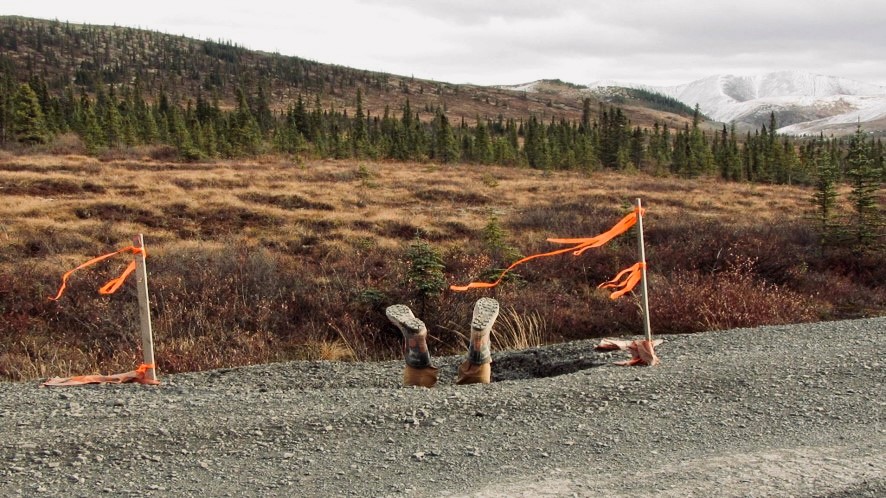 Roads built on permafrost can cost up to ten times as much to build and maintain as roads in the south because of sinkholes and other permafrost-related geohazards. This is true along the Dempster Highway, where permafrost-related geohazards pose a risk to public safety and require costly and frequent maintenance by the Government of Yukon's Highways and Public Works. The goal of this project is to investigate the causes of recurring sinkholes at kilometer 82 and kilometer 102 of the Dempster Highway and provide remediation strategies.
Roads built on permafrost can cost up to ten times as much to build and maintain as roads in the south because of sinkholes and other permafrost-related geohazards. This is true along the Dempster Highway, where permafrost-related geohazards pose a risk to public safety and require costly and frequent maintenance by the Government of Yukon's Highways and Public Works. The goal of this project is to investigate the causes of recurring sinkholes at kilometer 82 and kilometer 102 of the Dempster Highway and provide remediation strategies.
The main objective of this project is to better understand the causes of sinkholes at km 82 and km 102-103 of the Dempster Highway, and to provide remediation strategies based on the findings. The sinkholes at km 82 of the Dempster Highway are recurring hazards, that have led to the collapse of the right-hand side of the highway. Similarly, at km 102 (Two Moose Lake), general subsidence and sinkholes have formed along the left-hand side of the road, encroaching on the road embankment. Regular repairs and maintenance have been required at these sites in order to minimize risk to road users.
To better understand why these sinkholes are occurring, the Permafrost and Geoscience Research team (formerly within the Northern Climate Exchange) began with a preliminary study of existing data and reports. Then, in July 2016, field work was completed including electrical resistivity tomography (ERT) surveys, shallow borehole drilling and the collection of geotechnical cores, and the installation of ground temperature monitoring sensors. The results from these assessments showed that the sinkholes at km 82 are likely due to ground water movement and sediment leaching rather than the melting of ground ice, but that the sinkholes at km 102 are likely due to a combination of massive ice melt and sediment leaching due to ground and surface water movement. For both cases, hazard mitigation techniques were suggested. A report was completed and delivered to Government of Yukon's Highways and Public Works in 2017.
|
Dr. Fabrice Calmels (project lead) |
|
|
Louis Philippe Roy (project researcher) |
YukonU Research Centre |
|
Cyrielle Laurent (GIS technician) |
YukonU Research Centre |
|
Brian Horton (project manager) |
YukonU Research Centre |